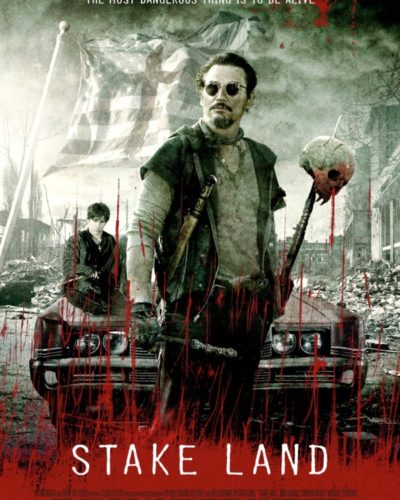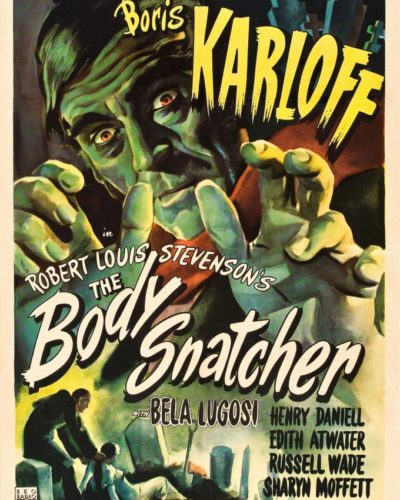“In Texas, we Don’t Dial 911” – A Grindhouse Nightmare in ‘Planet Terror’
When it comes to movie experiences that strike a bloody chord with horror buffs, few come stylized in the gritty, larger-than-life way that Robert Rodriguez’s ‘Planet Terror’ does. Released in 2007 as one half of the ‘Grindhouse’ double feature, alongside Quentin Tarantino’s ‘Death Proof,’ ‘Planet Terror’ resurrects the exuberant excess of 70s exploitation horror. This is a world where a mysterious bio-weapon release turns the denizens of a quiet Texas town into ravenous, pus-oozing creatures. The survivors, a motley crew that includes go-go dancers, doctors, and an outlaw with a score to settle, must fight to escape the infected, the military, and the madness that engulfs their world.
The Filthy Aesthetic: Crafting ‘Planet Terror’s’ Atmosphere of Outrageous Horror
The tone of ‘Planet Terror’ is firmly rooted in its homage to the grindhouse theaters of yore. It’s not about terror creeping behind a drawn curtain, but rather the visceral, unabashed display of flesh and gore. The visuals scream this intention; grainy footage riddled with scratches and intentional ‘missing reels’ lend an air of authenticity to the experience. The horror is served up with a side of campy humor and thrives on shock value—a sanguine cocktail of pleasure and revulsion.
To his credit, Rodriguez masterfully balances horror and humor without diminishing the impact of either. It’s an orgy of explosive action and ever-escalating stakes that keeps viewers simultaneously laughing and wincing. But the real horror lies not in the grotesque creatures the characters face but in the inexorable fall of society around them.
The Devil is in the Details: Visual and Auditory Terrors
With cinematography that revels in its excesses, ‘Planet Terror’ employs aggressive splatters of reds and washed-out yellows to saturate scenes with a sense of impending doom. Quick cuts, zooms, and chaotic framing amplify the confusion and desperation. The special effects marry practical prosthetics with CGI, culminating in the film’s iconic image of Rose McGowan’s Cherry Darling, her leg replaced with a machine gun, emblematic of Rodriguez’s vision of empowerment amidst the unthinkable.
Where visuals might occasionally shock, sound paves the road for dread. The soundtrack, punctuated by rousing compositions, paired with squelches, screams, and gunfire, leaves viewers’ nerves frayed. In ‘Planet Terror,’ the music stirs a primal urge to stand and fight, while the sound effects serve to remind us of the hopelessness of it all.
Monstrous Personalities: Acting Through the Apocalypse
The performances teeter on the brink of parody yet never fully fall into farce. Rose McGowan and Freddy Rodriguez bring a genuine pathos to their over-the-top characters, embracing the chaos around them. As casualties mount and the stakes rise, their performances ground the film, reminding us that their fight, while absurd, is still very much human. The supporting cast, with Josh Brolin’s demented doctor and Marley Shelton’s anesthetist strapped for more than just time, add to the feeling of a world drastically unhinged.
Largely, the characters are archetypes familiar to the horror genre, but they’re given enough love and flesh (to be subsequently torn and mangled) to become more than mere cliché cutouts. Their reactions—whether petrified or head-on—fill out the fabric of ‘Planet Terror,’ stitching viewer investment amidst the chaos.
Grindhouse Grotesques: Horror Conventions and Social Morbidity
‘Planet Terror’ is a smorgasbord of horror flavors, primarily feasting on the body horror subgenre with its gruesome depictions of deformed bodies and visceral terror. The grotesqueness of the zombies—sorry, “sickos”—and the characters’ transformations play to our deepest fears of disease and loss of identity. It’s not psychological subtlety but physical mutation that terrifies here.
The methods Rodriguez employs rely heavily on gore and shock, yet there is cunning in the chaos. The frights are potent reminders of our fragility, and attacks come not just from without, but within—highlighting themes of contagion, survival, and what it means to remain human.
Satire lurks beneath the film’s sticky surface; Rodriguez comments on the military-industrial complex, government incompetence, and survivalist culture, etching a sociopolitical message into his gory tableau.
‘Planet Terror’: A Delirious Blend of Blood, Guts, and Heart’
‘Planet Terror’ is a horror joyride that revels in its influences while carving out its own niche. It satisfies the hunger for unapologetic gore, blasts through with relentless action, spurts humor at the darkest of times, and above all, it never takes itself too seriously. Horror connoisseurs will appreciate Rodriguez’s dedication to the genre’s pulpy roots, while casual viewers might find themselves both repelled and intrigued by the film’s brazen approach.
When stacked against the pantheon of horror classics, ‘Planet Terror’ stands as a modern torchbearer of the grindhouse legacy. It is the garish, unrefined cousin of refined horror films—a dirty pleasure that asks for no apologies.
In ‘Planet Terror,’ what terrifies is not subtlety or suspense but shameless spectacle—a throwback to a time when horror wasn’t afraid to get its hands (and everything else) dirty. Viewer discretion for graphic content is advised, but if you have a taste for the macabre in its most rebellious form, ‘Planet Terror’ is your siren call.
The film has its flaws—arguably in pacing, and perhaps in moments where homage feels more like pastiche—but these are small prices to pay for an audacious slice of cinematic terror. Whether you’re a veteran of the midnight movie circuit or a newcomer to the genre, ‘Planet Terror’ has something twisted to offer. Just remember—when the credits roll, you might want to check twice before dialing 911.




